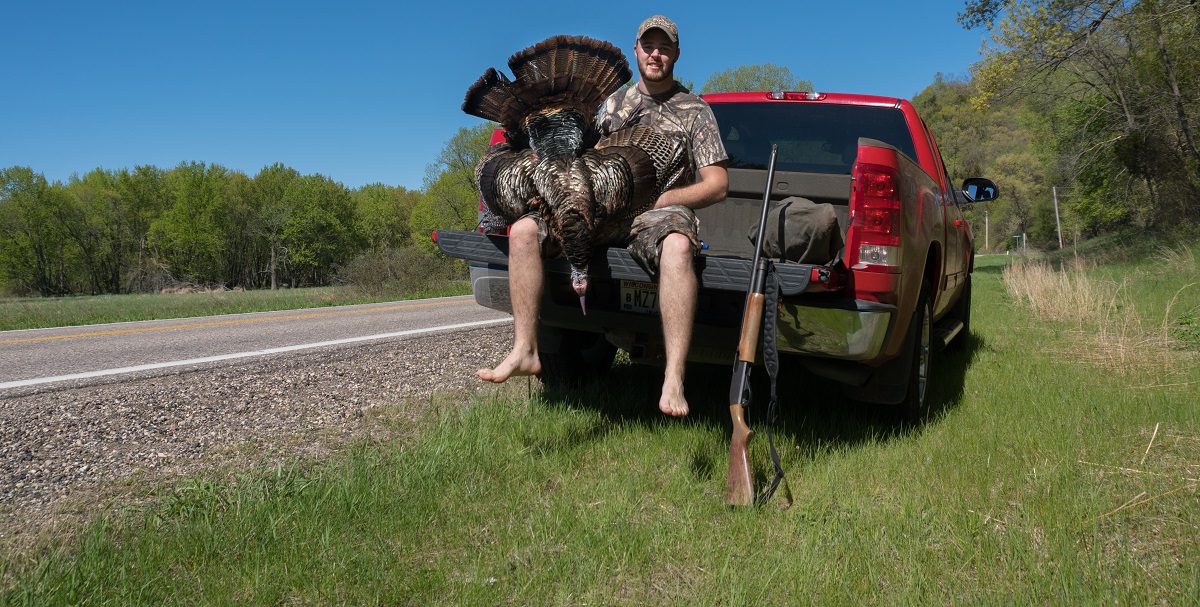By 7:30 a.m. on May 7th, I was heading into my third setup of the morning on public land in Wisconsin’s Driftless Area. Spring turkey season had been open for over a month and wary toms were getting smart to the most common tricks in the book. Standing atop a steep bluff, I could hear a gobbler sounding off. He was well over a half mile away and tucked tightly into the river bottom. Being my only option, I went after him.
I made more noise than I would have liked as I crept in. I went over my boots in water and my morale was low. To make matters worse, the tom had shut up. Regardless, I set up underneath a large maple tree and began to make some light yelps. Without any response for 45 minutes, I decided to make my way closer to where I thought I had the gobbler pinpointed. I made it only 50 yards before stopping for another light sequence of yelps. He hammered back in response, and I immediately tucked myself into the closest deadfall I could find. Not two minutes later, he was walking straight down the barrel of my gun. With the pull of the trigger, I filled my first Wisconsin turkey tag of the season.
This hunt was a classic example of the importance of getting inside a tom’s bubble before he commits to the setup. If you want to see this style of hunting in action, check out this recent episode of The Hunting Public. In the episode, Aaron uses a ditch to sneak in tight to a tom that eventually comes within gun range but was on the wrong side of the public/private boundary.
Getting close to toms is always important, but especially during the early season when birds are flocked up and not straying far from hens. The tom I killed surely heard my calling before I crept the final 50 yards. Once I closed the gap I was within 75 yards of him as he strutted on a dry knob in the river bottom. The light yelps had him thinking one of his hens was unaccounted for and triggered a response that brought him within range. Those same yelps didn’t do a thing from 125 yards out.
Closing the Distance on Turkeys
There are lots of ways to close the gap, but none better than using the terrain to your advantage. On my hunt, I kept tall cattails between my position and the suspected location of the gobbler to prevent him from seeing me as I snuck through the flat river bottom. Creeks and ditches also make for useful travel corridors, but are mostly exclusive to Midwestern states like Iowa, Illinois, and Missouri.
If you’re hunting an area without much topography (a.k.a. flat land), one you can use to your advantage is the sun and shadows. Keep the sun to your back during the early morning hours when sneaking through the timber. The blinding sun will make it difficult for birds to pick out the human silhouette.

Another strategy is to do your homework! Pattern birds before your hunt and take note of the areas where turkeys are spending most of their time. This tactic is useful if you’re hunting a small property with limited space to roam or want to hunt from the confines of a ground blind. Turkeys are unlike deer in the sense that they won’t spook at the sight of a new blind in the middle of a field. Focus on getting set up as early as possible and let the waiting game begin. Turkeys are creatures of habit, especially during the early season. If you’ve put in time scouting and patterning birds, odds are high that your homework will pay off with an exciting hunt.
RELATED: 6 Preseason Scouting Tactics
Regardless if you’re a run-and-gun turkey hunter or if you prefer the sit and wait approach, keep in mind that closing the gap to your quarry ever so slightly can make all the difference. If your setup fails once, don’t be afraid to tweak it or abandon it entirely.







